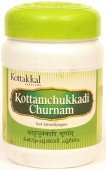Lashuna, Lasuṇa, Lasuna, Laśuna, Laśūna: 27 definitions
Introduction:
Lashuna means something in Hinduism, Sanskrit, Jainism, Prakrit, Buddhism, Pali, Marathi, biology. If you want to know the exact meaning, history, etymology or English translation of this term then check out the descriptions on this page. Add your comment or reference to a book if you want to contribute to this summary article.
The Sanskrit terms Laśuna and Laśūna can be transliterated into English as Lasuna or Lashuna, using the IAST transliteration scheme (?).
In Hinduism
Ayurveda (science of life)
Cikitsa (natural therapy and treatment for medical conditions)
Source: Wisdom Library: Ayurveda: CikitsaLaśuna (लशुन) is a Sanskrit word referring to “garlic” (a species of onion) from the from the Amaryllidaceae (amaryllids) family of flowering plants. It is used throughout Ayurvedic literature such as the Caraka-saṃhitā and the Suśruta-saṃhitā. It is also known as Rasona. The official botanical name is Allium sativum.
The plant Laśuna is also mentioned as a medicine used for the treatment of all major fevers, as described in the Jvaracikitsā (or “the treatment of fever”) which forms the first chapter of the Sanskrit work called Mādhavacikitsā. In this work, the plant has the synonym Rasona.
Kalpa (Formulas, Drug prescriptions and other Medicinal preparations)
Source: Shodhganga: Edition translation and critical study of yogasarasamgrahaLaśuna (लशुन) refers to the medicinal plant known as “Allium sativum Linn.” and is dealt with in the 15th-century Yogasārasaṅgraha (Yogasara-saṅgraha) by Vāsudeva: an unpublished Keralite work representing an Ayurvedic compendium of medicinal recipes. The Yogasārasaṃgraha [mentioning laśuna] deals with entire recipes in the route of administration, and thus deals with the knowledge of pharmacy (bhaiṣajya-kalpanā) which is a branch of pharmacology (dravyaguṇa).
Toxicology (Study and Treatment of poison)
Source: Shodhganga: Kasyapa Samhita—Text on Visha ChikitsaLaśuna (लशुन) refers to “garlic” and is included in a (snake) poison antidote recipe, according to the Kāśyapa Saṃhitā: an ancient Sanskrit text from the Pāñcarātra tradition dealing with both Tantra and Viṣacikitsā—an important topic from Āyurveda which deals with the study of Toxicology (Viṣavidyā or Sarpavidyā).—Kāśyapa prescribes various antidotes to quell the poison by administering them through nasal drugs, collyrium, ointment, herbal drinks and diet. According to Kāśyapasaṃhitā (verse VIII.12)—“Equal measures of powdered Vyūṣa or Trikaṭu, Asafoetida and garlic (laśuna) administered nasally by filling the same in the nose is also effective in combating poison.”.
Unclassified Ayurveda definitions
Source: PMC: Ayurvedic management of postlumbar myelomeningocele surgeryVāgbhaṭa has identified Lasuna (Allium sativum) as one of the prime drugs to curtail the pathological changes due to vāta dośa. Vāgbhaṭa also considers lasuna as the prime drug to treat vātavyādhi.
Source: Ancient Science of Life: Vaidyavallabha: An Authoritative Work on Ayurveda TherapeuticsLaśuna (लशुन) or Laṣaṇa refers to Allium sativum, and is the name of a medicinal plant dealt with in the 17th-century Vaidyavallabha (chapter 8) written by Hastiruci.—The Vaidyavallabha is a work which deals with the treatment and useful for all 8 branches of Ayurveda. The text Vaidyavallabha has been designed based on the need of the period of the author, availability of drugs (viz., Laśuna) during that time, disease manifesting in that era, socio-economical-cultural-familial-spiritual-aspects of that period Vaidyavallabha.

Āyurveda (आयुर्वेद, ayurveda) is a branch of Indian science dealing with medicine, herbalism, taxology, anatomy, surgery, alchemy and related topics. Traditional practice of Āyurveda in ancient India dates back to at least the first millenium BC. Literature is commonly written in Sanskrit using various poetic metres.
Vastushastra (architecture)
Source: Google Books: Indian Temple Architecture: Form and TransformationLaśuna (लशुन).—Part of the standard pilaster;—The tātī sits on the laśuna. In other traidtions, particularly in Tamil Nadu (and already at Ajanta), the laśuna has the springy shape of an inverted bell, but in the Karṇāṭa Drāviḍa tradition it is generally like rouned shoulders and a chest. In earlier examples tātī and laśuna seem like two sections of a single element, the ‘tātī/laśuna’, but later the tātī becomes attached to the ghaṭa, and the laśuna evolves its own collar.

Vastushastra (वास्तुशास्त्र, vāstuśāstra) refers to the ancient Indian science (shastra) of architecture (vastu), dealing with topics such architecture, sculpture, town-building, fort building and various other constructions. Vastu also deals with the philosophy of the architectural relation with the cosmic universe.
Shilpashastra (iconography)
Source: Wisdom Library: Śilpa-śāstraLaśuna (लशुन) refers to the ‘chest-and-shoulder’ element of pillars and pilasters..

Shilpashastra (शिल्पशास्त्र, śilpaśāstra) represents the ancient Indian science (shastra) of creative arts (shilpa) such as sculpture, iconography and painting. Closely related to Vastushastra (architecture), they often share the same literature.
Purana and Itihasa (epic history)
Source: archive.org: Shiva Purana - English TranslationLaśuna (लशुन) refers to “garlic”, which a Śiva-devotee should refrain from eating, according to the Śivapurāṇa 1.25, while explaining the greatness of Rudrākṣa:—“[...] a devotee of Śiva shall refrain from eating meat, garlic [viz., Laśuna], onion, red garlic, potherb, Śleṣmātaka, pig of rubbish and liquors.”.

The Purana (पुराण, purāṇas) refers to Sanskrit literature preserving ancient India’s vast cultural history, including historical legends, religious ceremonies, various arts and sciences. The eighteen mahapuranas total over 400,000 shlokas (metrical couplets) and date to at least several centuries BCE.
In Jainism
General definition (in Jainism)
Source: Wisdom Library: JainismLaśuna (लशुन) refers to the “garlic”: a type of vegetable (śāka), according to The Vyākhyāprajñapti 7.3.276. It can also be spelled like Lasuṇa. Different kinds of vegetables were grown in the vegetable gardens (kaccha / kakṣa). The consumption of vegetables was considered essential for digesting food according to the Niśīthacūrṇi. The Jaina texts forbid the consumption of certain vegetables as it leads to killing of insects.
The Vyākhyāprajñapti, also known as the Bhagavatīsūtra contains a compilation of 36,000 questions answered by Mahāvīra and dates to at least the 1st century A.D. The Niśīthacūrṇi by Jinadāsa is a 7th century commentary on the Niśthasūtra and deals with Jain medical knowledge.
Source: archive.org: Jaina YogaLaśuna (लशुन) in Sanskrit and Lhasaṇa in Prakrit refers to garlic (Allium sativum Linn.). This plant is classifed as ananta-kāya, or “plants that are inhabited by an infinite number of living organisms”, and therefore are abhakṣya (forbidden to consume) according to both Nemicandra (in his Pravacana-sāroddhāra v245-246) and Hemacandra (in his Yogaśāstra 3.44-46). Those plants which are classified as ananta-kāyas (e.g., laśuna) seem to be chosen because of certain morphological peculiarities such as the possession of bulbs or rhizomes orthe habit of periodically shedding their leaves; and in general theyare characterized by possibilities of vegetative reproduction.

Jainism is an Indian religion of Dharma whose doctrine revolves around harmlessness (ahimsa) towards every living being. The two major branches (Digambara and Svetambara) of Jainism stimulate self-control (or, shramana, ‘self-reliance’) and spiritual development through a path of peace for the soul to progess to the ultimate goal.
Biology (plants and animals)
Source: Google Books: CRC World Dictionary (Regional names)Lasuna in India is the name of a plant defined with Allium sativum in various botanical sources. This page contains potential references in Ayurveda, modern medicine, and other folk traditions or local practices It has the synonym Porrum ophioscorodon (Link) Rchb. (among others).
Example references for further research on medicinal uses or toxicity (see latin names for full list):
· Species Plantarum (1753)
· Gardeners Dictionary, ed. 8
If you are looking for specific details regarding Lasuna, for example health benefits, pregnancy safety, side effects, chemical composition, extract dosage, diet and recipes, have a look at these references.

This sections includes definitions from the five kingdoms of living things: Animals, Plants, Fungi, Protists and Monera. It will include both the official binomial nomenclature (scientific names usually in Latin) as well as regional spellings and variants.
Languages of India and abroad
Pali-English dictionary
Source: BuddhaSasana: Concise Pali-English Dictionarylasuṇa : (nt.) garlic.
Source: Sutta: The Pali Text Society's Pali-English DictionaryLasuṇa, & Lasuna (nt.) (cp. Sk. laśuna) garlic Vin. II, 140; IV, 258; J. I, 474; Vv 436; VvA. 186. (Page 582)

Pali is the language of the Tipiṭaka, which is the sacred canon of Theravāda Buddhism and contains much of the Buddha’s speech. Closeley related to Sanskrit, both languages are used interchangeably between religions.
Marathi-English dictionary
Source: DDSA: The Molesworth Marathi and English Dictionarylaśuna (लशुन).—n S Garlic, Allium sativum.
--- OR ---
lasūṇa (लसूण).—m f (laśuna S) Garlic, Allium sativum. 2 The root of it, or a clove of the root.
Source: DDSA: The Aryabhusan school dictionary, Marathi-Englishlaśuṇa (लशुण).—f See lasūṇa.
--- OR ---
lasūṇa (लसूण).—m f lasaṇa n Garlic; the root of it.
Marathi is an Indo-European language having over 70 million native speakers people in (predominantly) Maharashtra India. Marathi, like many other Indo-Aryan languages, evolved from early forms of Prakrit, which itself is a subset of Sanskrit, one of the most ancient languages of the world.
Sanskrit dictionary
Source: DDSA: The practical Sanskrit-English dictionaryLaśuna (लशुन) or Laśūna (लशून).—(aśeḥ unan, laśaśca Uṇādi-sūtra 3.55) Garlic; निखिलरसायनमहितो गन्धेनोग्रेण लशुन इव (nikhilarasāyanamahito gandhenogreṇa laśuna iva) R. G. (= Bv. 1.81); यशःसौरभ्यलशुनः (yaśaḥsaurabhyalaśunaḥ) Bv.1.93.
Derivable forms: laśunaḥ (लशुनः), laśunam (लशुनम्), laśūnaḥ (लशूनः), laśūnam (लशूनम्).
Source: Cologne Digital Sanskrit Dictionaries: Shabda-Sagara Sanskrit-English DictionaryLaśuna (लशुन).—n.
(-naṃ) Garlic. E. aś to eat, Unadi aff. unan, and laśa substituted for the root; also with the vowel of the aff, long, laśūna n.
(-naṃ).
Source: Cologne Digital Sanskrit Dictionaries: Benfey Sanskrit-English DictionaryLaśuna (लशुन).—n. Garlic, [Mānavadharmaśāstra] 5, 5.
Source: Cologne Digital Sanskrit Dictionaries: Cappeller Sanskrit-English DictionaryLaśuna (लशुन).—[neuter] ([masculine]) leek, garlic.
Source: Cologne Digital Sanskrit Dictionaries: Monier-Williams Sanskrit-English Dictionary1) Laśuna (लशुन):—n. or (rarely) m. ([Uṇādi-sūtra iii, 57]; sometimes written lasuna cf. rasuna) garlic, [Gautama-dharma-śāstra; Manu-smṛti; Mahābhārata] etc.
2) one of the 10 kinds of onion, [cf. Lexicographers, esp. such as amarasiṃha, halāyudha, hemacandra, etc.]
Source: Cologne Digital Sanskrit Dictionaries: Yates Sanskrit-English DictionaryLaśuna (लशुन):—(naṃ) 1. n. Garlick.
Source: DDSA: Paia-sadda-mahannavo; a comprehensive Prakrit Hindi dictionary (S)Laśuna (लशुन) in the Sanskrit language is related to the Prakrit word: Lasuṇa.
[Sanskrit to German]
Sanskrit, also spelled संस्कृतम् (saṃskṛtam), is an ancient language of India commonly seen as the grandmother of the Indo-European language family (even English!). Closely allied with Prakrit and Pali, Sanskrit is more exhaustive in both grammar and terms and has the most extensive collection of literature in the world, greatly surpassing its sister-languages Greek and Latin.
Prakrit-English dictionary
Source: DDSA: Paia-sadda-mahannavo; a comprehensive Prakrit Hindi dictionaryLasuṇa (लसुण) in the Prakrit language is related to the Sanskrit word: Laśuna.
Prakrit is an ancient language closely associated with both Pali and Sanskrit. Jain literature is often composed in this language or sub-dialects, such as the Agamas and their commentaries which are written in Ardhamagadhi and Maharashtri Prakrit. The earliest extant texts can be dated to as early as the 4th century BCE although core portions might be older.
Kannada-English dictionary
Source: Alar: Kannada-English corpusLaśuna (ಲಶುನ):—
1) [noun] the bulbous herb Allium sativum of Liliaceae family; garlic.
2) [noun] its strong-smelling bulb used as a seasoning food articles; garlic.
--- OR ---
Lasuna (ಲಸುನ):—[noun] = ಲಶುನ [lashuna].
Kannada is a Dravidian language (as opposed to the Indo-European language family) mainly spoken in the southwestern region of India.
Nepali dictionary
Source: unoes: Nepali-English Dictionary1) Laśuna (लशुन):—n. → लसुन [lasuna]
2) Lasuna (लसुन):—n. garlic;
Nepali is the primary language of the Nepalese people counting almost 20 million native speakers. The country of Nepal is situated in the Himalaya mountain range to the north of India.
See also (Relevant definitions)
Partial matches: Khadana, Ashuna, Rasa, Raca.
Starts with: Lashunacurna, Lashunadi, Lashunadyaghrita.
Query error!
Full-text (+22): Raktalashuna, Rasuna, Sitalashuna, Lashun, Lasana, Capalasuna, Lashuniya, Lasuna-vel, Lasunah, Lasunas, Lashunacurna, Rasona, Lasona, Lahasuna, Lasun, Lahasun, Ilaiccumi, Acunan, Palandu, Ilacunam.
Relevant text
Search found 33 books and stories containing Lashuna, Asuna-khadana, Asuṇa-khādana, Lasuṇa, Lasuna, Laśuna, Lasūṇa, Laśuṇa, Laśūna, Rasa-uina, Rasa-uīna; (plurals include: Lashunas, khadanas, khādanas, Lasuṇas, Lasunas, Laśunas, Lasūṇas, Laśuṇas, Laśūnas, uinas, uīnas). You can also click to the full overview containing English textual excerpts. Below are direct links for the most relevant articles:
World Journal of Pharmaceutical Research
A review article on lasuna (alliumsativum) < [2018: Volume 7, July issue 13]
Effect of Lasuna Lakshadi Yoga on Asthi Sandhi Marmagatha: A Trial < [2021: Volume 10, September issue 11]
Pharmaceutico-analytical study of samanya and vishesh shodhana of parada < [2023: Volume 12, August issue 13]
Apadana commentary (Atthakatha) (by U Lu Pe Win)
Commentary on Biography of the thera Lasuṇadāyaka < [Chapter 4 - Kuṇḍadhānavagga (section on Kuṇḍadhāna)]
International Ayurvedic Medical Journal
Relevance of pharmacovigilance with referance to herbal drugs < [2016, Issue III March]
A descriptive study on role of female uttara vasti < [2022, Issue 11 November]
An ayurvedic polyherbal formulation mukkamukkadivati: a review < [2017, Issue VII, July]
Atharvaveda and Charaka Samhita (by Laxmi Maji)
Classification of Drugs in the Caraka-Saṃhitā < [Chapter 4 - Diseases and Remedial measures (described in Caraka-saṃhitā)]
Gulma (abdominal swelling) according to Caraka < [Chapter 4 - Diseases and Remedial measures (described in Caraka-saṃhitā)]
5b. Kṛmi (Worms) in the Atharvaveda < [Chapter 5 - Diseases and Remedies in Atharvaveda and Caraka-Saṃhitā]
Notices of Sanskrit Manuscripts (by Rajendralala Mitra)
Sahitya-kaumudi by Baladeva Vidyabhushana (by Gaurapada Dāsa)
Text 10.58 < [Chapter 10 - Ornaments of Meaning]
Related products
(+3 more products available)





